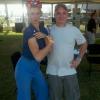Rocket crash
-
Members Online
- takair
- Pinecone
- Schllc
- Andy95W
- Ryan ORL
- Igor_U
- SKI
- TCC
- wolfbyte
- PeterRus
- thomas1142
- Tmack201
- tankles
- Smiles201
- Shortround
- Marc_B
- eman1200
- Oscar Avalle
- BlueDun
- BlueSky247
- SilverBullet89W
- dzeleski
- flyboy0681
- Sense
- Wooly
- Rsmithref
- Bryan G
- Rocket_Driver
- Kodiakflyer
- 47U
- prillayo03
- outermarker
- Richard Murdoch


Recommended Posts
Join the conversation
You can post now and register later. If you have an account, sign in now to post with your account.